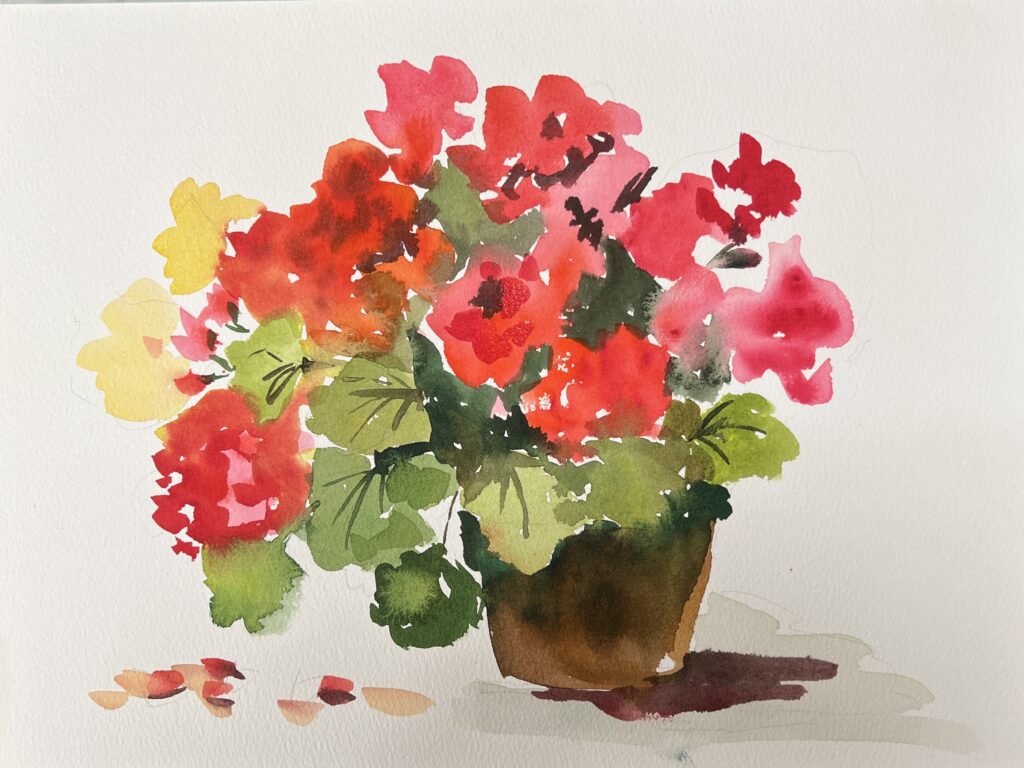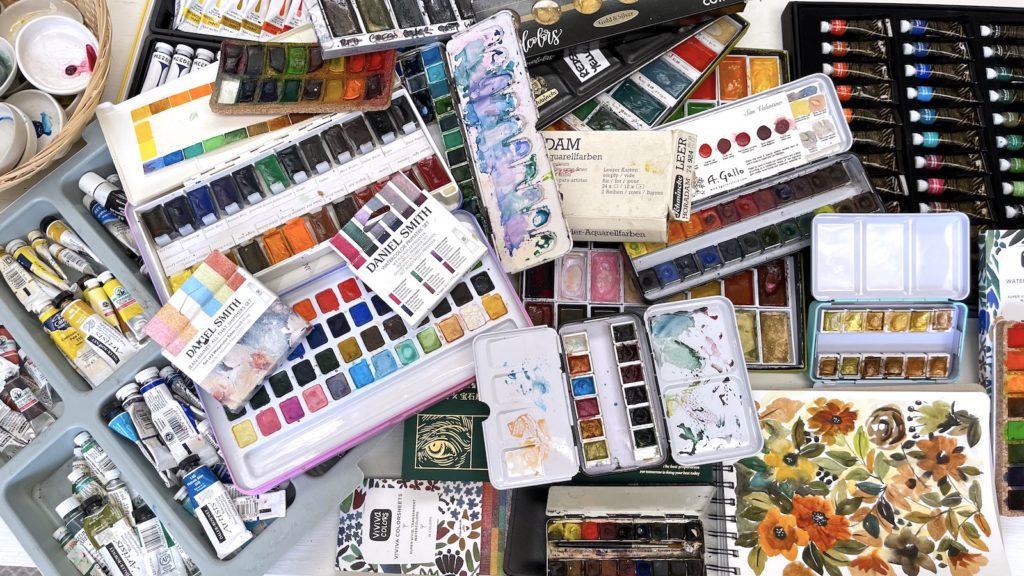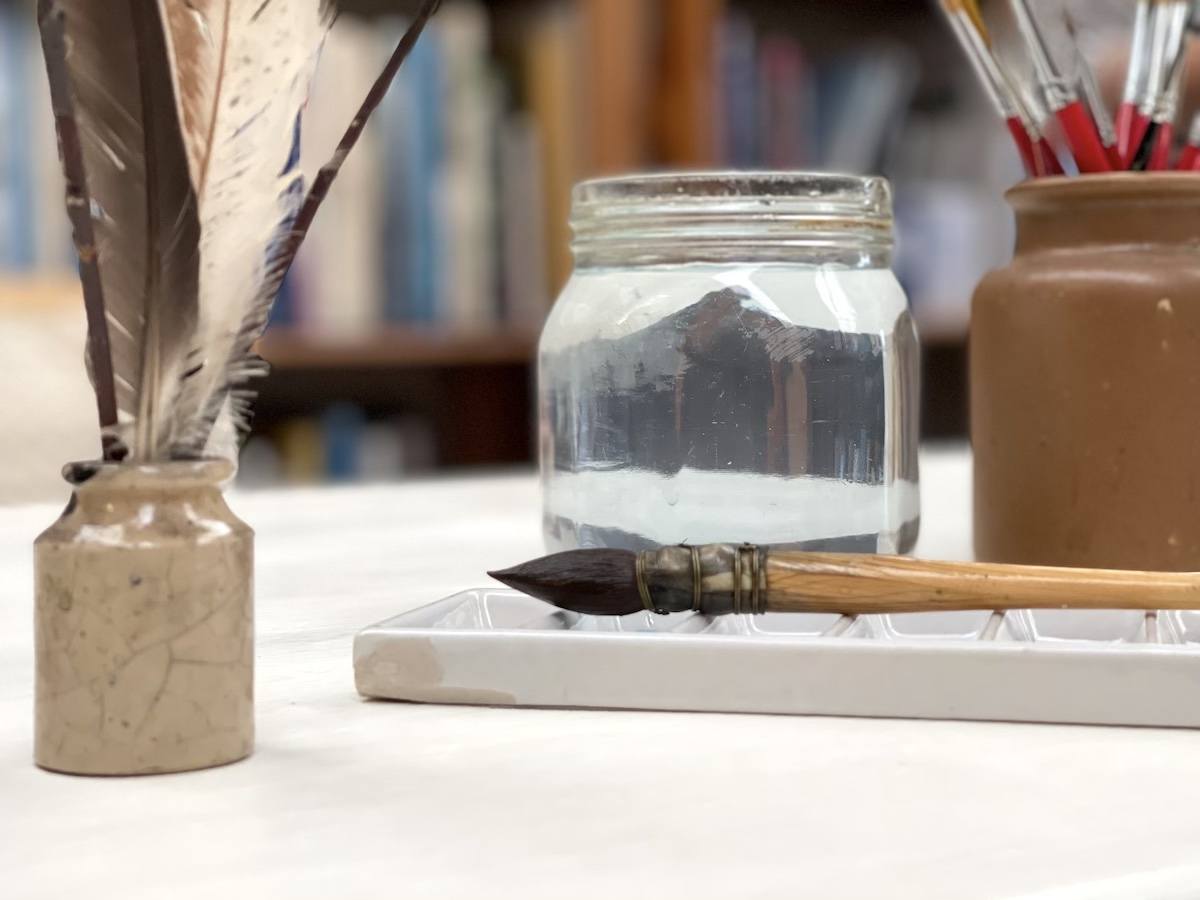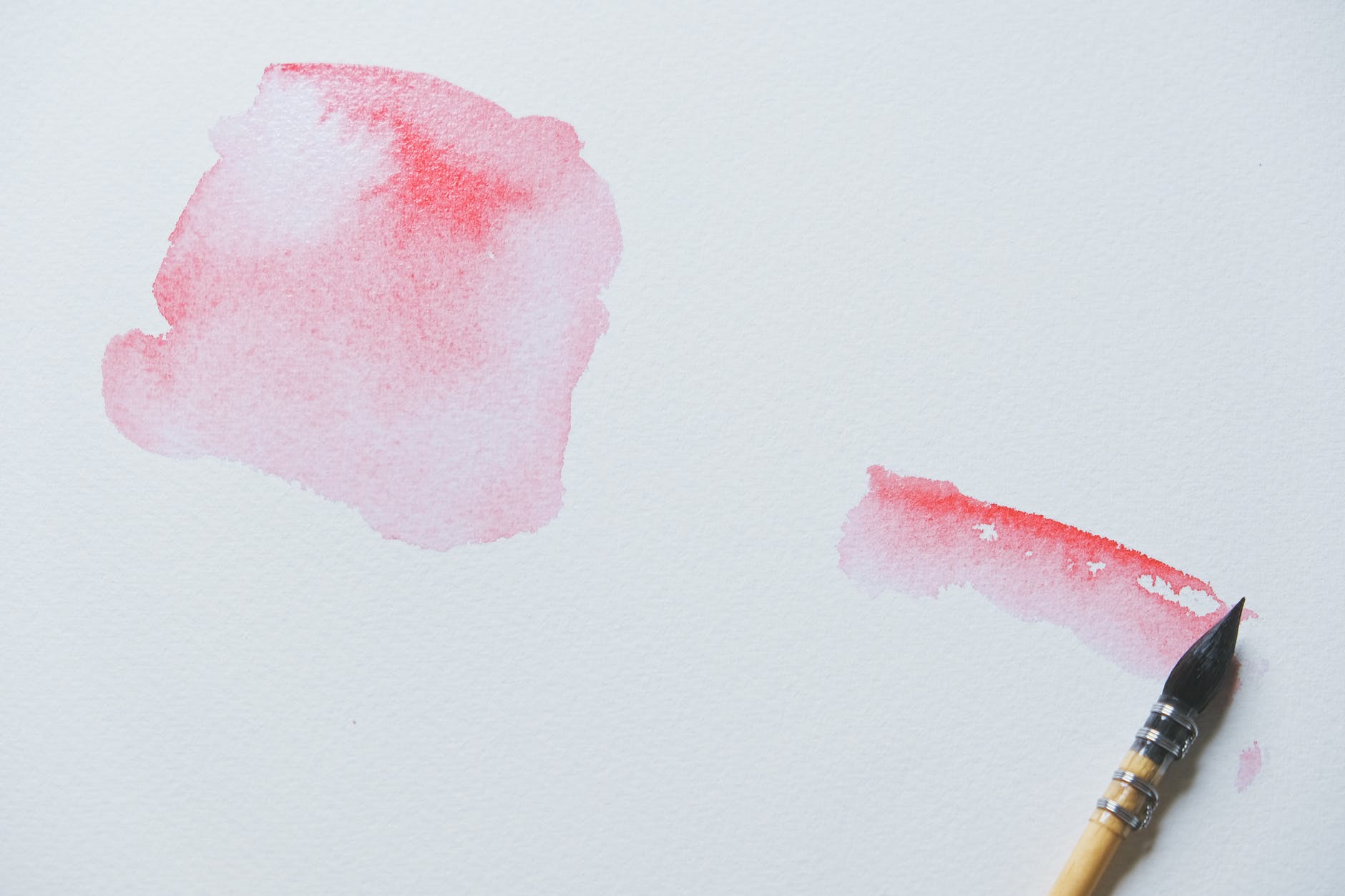Watercolor painting is a mesmerizing art form best known for its characteristic transparency and fluidity. Unlike most other mediums, watercolor offers a unique interplay of light and color, resulting in paintings that can be either delicate or vibrant.
If you’re considering adding watercolor painting as a hobby, these essential tips and insights will help you to begin with confidence, equipped for success. We’ll be covering what you need in terms of supplies, techniques, methods, and – perhaps most importantly – approach.

Gathering Your Supplies
The first step in watercolor painting is gathering the right supplies. You don’t need an extensive collection of equipment to start; a few basics will suffice:
(The links in this post are to some of my recommended products on Amazon, which I hope will be helpful. They are affiliate links.)
- Watercolor Paints: Start with a small set of high-quality paints. You can choose between tubes and pans. Tubes offer more pigment and are easier to mix, while pans are more portable and convenient.
- Brushes: Invest in a few good brushes. A round brush in sizes 6 and 10, a 1/2 inch flat brush, and a small detail brush should be enough for beginners. Look for brushes that are soft, hold water well, and come to a fine point.
- Paper: Watercolor paper is specially designed to handle the moisture and pigment load. Begin with a pad or block of cold-pressed paper, which has a moderate texture and is forgiving for beginners. A weight of 140 lb (300 gsm) is standard.
- Palette: A mixing palette, whether ceramic or plastic, will be necessary for mixing your colors.
- Additional Supplies: A pencil for sketching, masking tape, paper towels, and a container of water are also essential.
Try not to go overboard and overwhelm yourself with too many supplies too soon. It can be very inhibiting to your creativity!

Understanding the Basics
Before diving into a painting, it’s important to understand some foundational techniques and concepts.


Water Control: Watercolor is all about the balance between water and pigment. Practice creating washes with varying levels of water to understand how the paint behaves. A wet brush with a lot of water creates light, translucent washes, while a drier brush holding more pigment creates more intense colors.
Color Mixing: Learn to mix your own colors rather than relying solely on pre-mixed ones. This will give you a better understanding of color theory and expand your palette. It will also make your paintings more interesting and more rewarding. Start with the three primary colors (red, blue and yellow) and practice mixing secondary and tertiary colors (violet, green and orange…)
Techniques: Familiarize yourself with basic techniques such as wet-on-wet (applying wet paint onto wet paper) and wet-on-dry (applying wet paint onto dry paper). Wet-on-wet creates soft, blended edges, while wet-on-dry produces sharper, more defined lines.
Starting your First Painting
When you’re ready to start your first painting, begin with a simple object such as a piece of fruit or a single flower. You will soon move on to simple landscapes, flowers and birds and animals.

Follow these steps to get started:
- Sketch Lightly: Use a pencil to lightly sketch your composition. Avoid heavy lines that will show through the paint.
- Layering: Watercolor is typically applied in layers, from light to dark. Start with light washes to block in the main shapes and colors, then gradually add more detail and depth.
- Dry Time: Allow each layer to dry completely before adding another to prevent colors from bleeding together.
- Experiment and Enjoy: Don’t be afraid of making mistakes. There is no such thing as a mistake in art. Watercolor is a medium that often produces unexpectedly beautiful results. Each painting is a unique learning experience.
- Here are a few good books to get you started: Watercolor the Easy way – Watercolor Workbook. – Watercolor Success in 4 Steps. There are many more, and if you go to my amazon store here you’ll find more recommendations in the Bookshelf.
Embracing the Process
The most important aspect of starting to paint with watercolors is to enjoy the process. It’s a medium that encourages a degree of spontaneity and serendipity and helps you to let go and relax. As you gain confidence, you’ll want to experiment with different techniques and styles. Watch tutorials on YouTube, join a local art group, or take an online class to continue developing your skills. But most of all, paint as often as you can.
Watercolor painting can be incredibly rewarding, offering many possibilities for creativity. By starting with the basics and building on your experience, you’ll soon discover the joy and satisfaction that comes with mastering this beautiful art form.
Well written. Thanks, Diane! 🙂